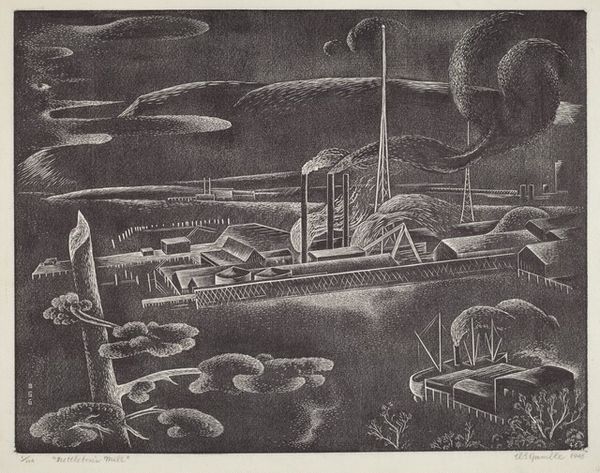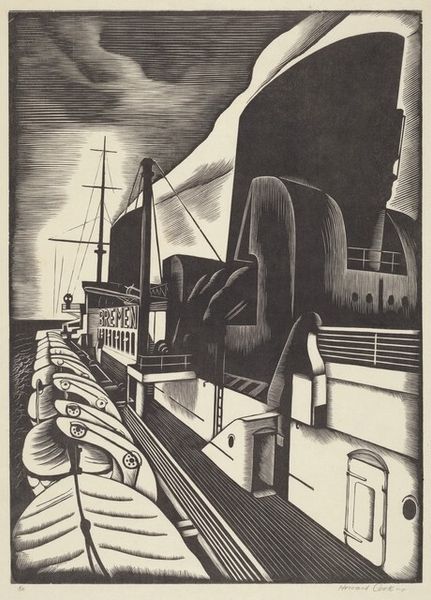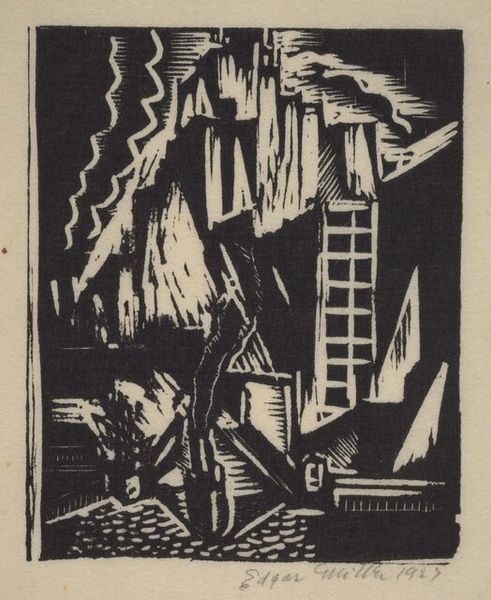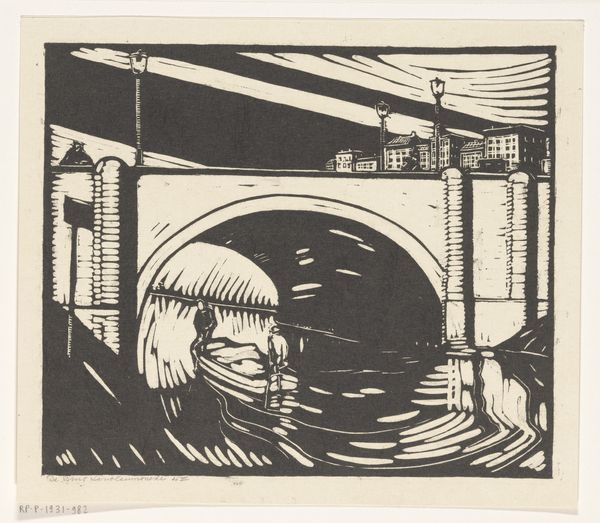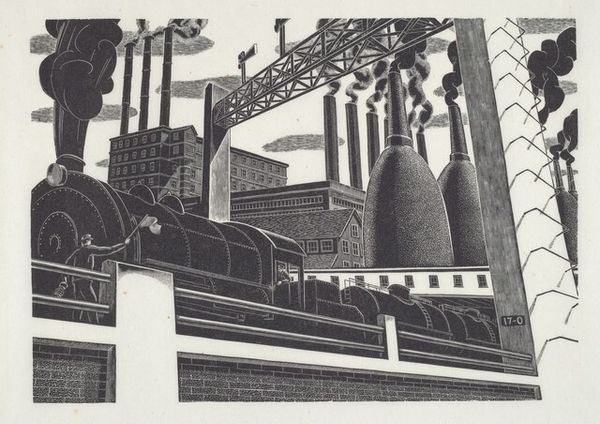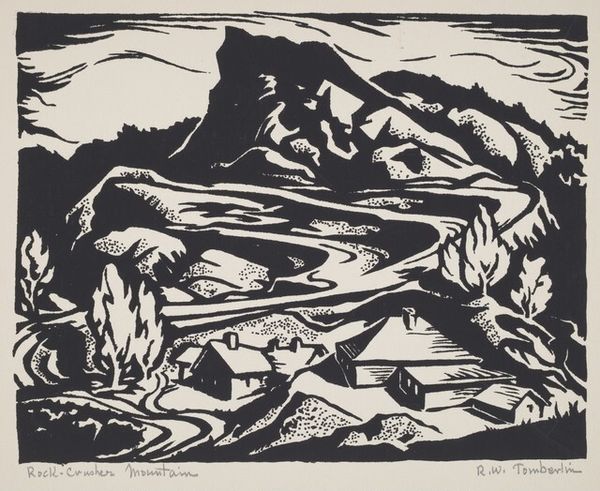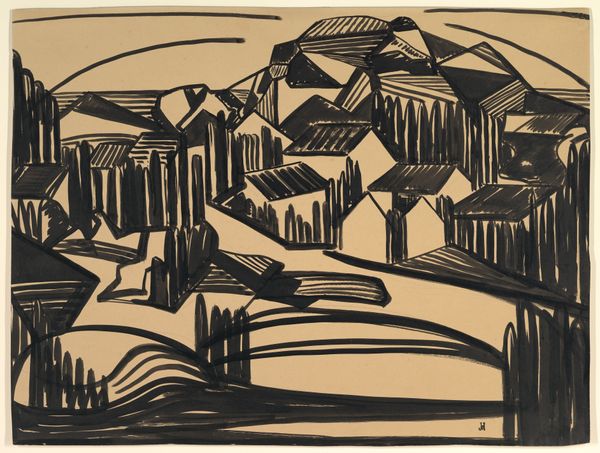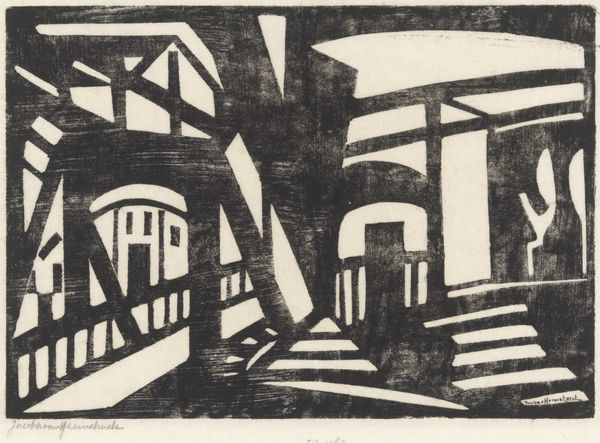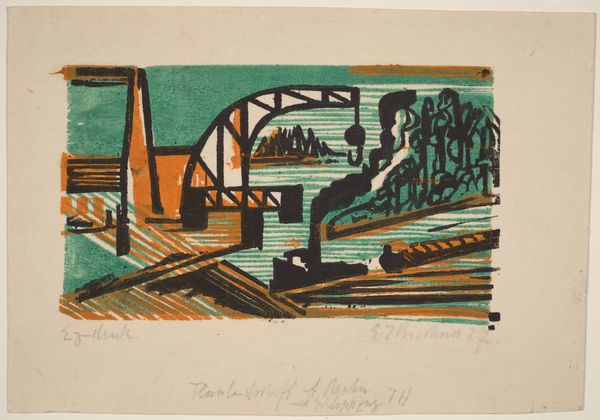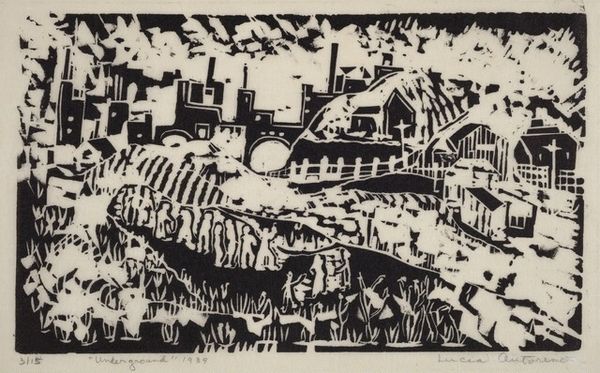
graphic-art, print, woodcut
#
graphic-art
#
ink drawing
# print
#
landscape
#
woodcut
#
cityscape
#
monochrome
Dimensions: image: 178 x 235 mm sheet: 279 x 330 mm
Copyright: National Gallery of Art: CC0 1.0
Editor: Here we have William Harold Smith’s woodcut, "Underpass," created in 1941. The high contrast monochrome really makes the industrial imagery pop. It feels very much of its time, that Depression era aesthetic. How do you read the socio-political context of this work? Curator: This piece speaks volumes about the era's shifting landscapes, both physically and politically. Look at the inclusion of the WPA sign; it's a direct reference to the Works Progress Administration, a New Deal program. Editor: Right, the WPA was instrumental in employing artists during the Depression, wasn’t it? Curator: Exactly. The government became a patron, shaping artistic production and influencing subject matter. So how does this image of industrialization, mediated by government patronage, strike you? Editor: It’s like the artist is acknowledging the complicated relationship between industrial progress and governmental intervention during the 1940's. The underpass itself seems to symbolize a path forward, even if it's under the shadow of industry and those foreboding clouds. Curator: That shadow is critical. What do you make of Smith's deliberate choice to highlight these elements over others? He could have romanticized the industrial landscape, yet there is a sense of somber acceptance here. Editor: Maybe it’s a reflection on the environmental costs and the human impact of this rapid industrialization? It is more than just documentation. Curator: Precisely. And think about the public role of art at this time. Woodcuts, being easily reproducible, democratized art. Editor: That's a powerful point. The ability to reach a wider audience certainly amplified its social commentary. I hadn’t considered that aspect of the printmaking technique. Curator: I find it endlessly fascinating to see how art is not created in a bubble, but responds to societal shifts. It’s also important to understand how the way art is distributed, like this WPA-era print, influences our view. Editor: Definitely, thinking about art as connected to larger social forces changes my understanding.
Comments
No comments
Be the first to comment and join the conversation on the ultimate creative platform.
